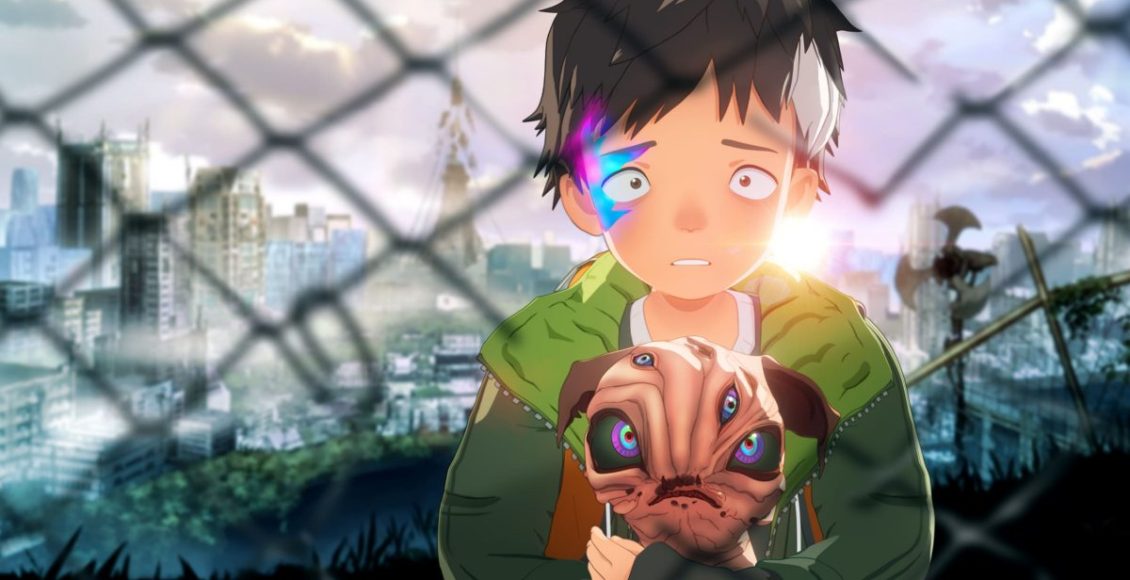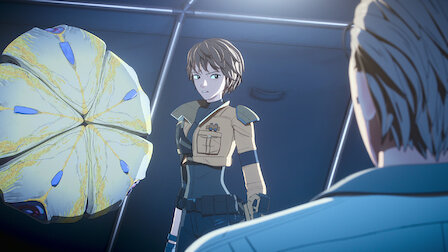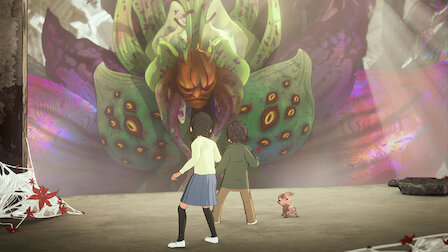My Daemon Review (Netflix) Create a world of people who hate strange creatures with unreasonable storyline.

My Daemon
Summary
In summary, the animation collaboration between Japan and Thailand is satisfactory. The fight scenes feature unique abilities of the creatures that vary in each episode. The animation is smooth with unconventional designs. However, a significant drawback lies in the storytelling aspect, where the theme of hating the creatures is overly emphasized and attempts to use it as a simple resolution in the conclusion, lacking depth and impact to emotion.
Overall
6.5/10User Review
( votes)Pros
- The animation collaboration between the Thai team and the Japanese storyline.
- Action scenes the creatures combat.
Cons
- The world setting people irrationally hating creatures.
- The storyline is straightforward.
ADBRO
My Daemon Netflix animated series with 13 episodes, created by Hirotaka Adachi , known for the animation “Exception ” by Yoshitaka Amano, a legendary illustrator with works from the Final Fantasy game series. However, this story is the work of a Thai team from Igloo Studio . It tells the tale of a post-apocalyptic world after a nuclear explosion, where radioactive dust gives rise to various bizarre life forms called “Daemons.” One day, a boy named Kento encounters Anna and decides to adopt one, marking the beginning of an adventure in a world filled with hatred.

My Daemon Review Netflix (No spoilers)
The series prior to this, “Exception,” by creator Hirotaka Adachi, also featured a narrative involving cyborg demons in a peculiar perspective. Similarly, it explored the question of whether these grotesque-looking life forms were true enemies or not. In this story, the focus remains on a world filled with “Daemons,” monstrous that humans Hate and fear, attempting to eradicate them. The protagonist of the story, a young boy named Kento, loves and cares for Anna, treating it as a cherished companion. However, Anna becomes a dangerous threat due to unique abilities, leading to a declaration to hunt down. Anna’s special ability to store things within body, akin to having a black hole inside, becomes a potential menace to the world. The series unfolds with mysteries hidden within Anna.
 The storyline primarily emphasizes action rather than drama, with the setting of the world featuring bounty hunters with characteristics similar to Pokémon. Individuals with special abilities control bizarre creatures to earn money and hunt down the protagonist in each episode. Each episode introduces different hunters with unique abilities, such as those who can become invisible, open dimensional doors, or gigantic creatures the size of buildings. The protagonist confronts them using Anna’s abilities, employing strategic thinking to fight and simultaneously helping to free the controlled creatures.
The storyline primarily emphasizes action rather than drama, with the setting of the world featuring bounty hunters with characteristics similar to Pokémon. Individuals with special abilities control bizarre creatures to earn money and hunt down the protagonist in each episode. Each episode introduces different hunters with unique abilities, such as those who can become invisible, open dimensional doors, or gigantic creatures the size of buildings. The protagonist confronts them using Anna’s abilities, employing strategic thinking to fight and simultaneously helping to free the controlled creatures.
Anna’s own abilities undergo continuous physical and combat evolution, eventually reaching a level where she can potentially bring about the downfall of the world. However, the narrative takes a twist as this power transforms into something that aids the world instead. While the plot may lean towards being somewhat conventional, the fight scenes are executed well, featuring intense and blood what might not be suitable for small child audiences (rated 16+).
 Due to the fact that this story unfolds in a very straightforward manner (unlike “Exception,” which delves deeper into philosophical themes), it reflects an attempt to construct a world around the issue of external appearance discrimination. The intention is to have a protagonist with a good conscience contrasting with everyone else, creating a narrative that progresses unnaturally with ongoing internal conflicts. For instance, hunters who keep these creatures but feel no emotional attachment, using them ruthlessly. Moreover, there is a lack of understanding as to why individuals like Kento and Anna exist in this world, creating a sense of defiance. This results in even child characters turning into ruthless individuals, and the creatures, despite having special abilities to help humans, are portrayed as mere domesticated animals. Additionally, the antagonist organization in the story, named the “Peaceful Organization,” ironically engages in actions contrary to its name. Even the founder of the organization merely hates these creatures, further complicating the dark and conflicted theme of the narrative. Despite attempts to use this theme to lead to a happy ending, it appears forced and does not harmonize well with the overall storyline.
Due to the fact that this story unfolds in a very straightforward manner (unlike “Exception,” which delves deeper into philosophical themes), it reflects an attempt to construct a world around the issue of external appearance discrimination. The intention is to have a protagonist with a good conscience contrasting with everyone else, creating a narrative that progresses unnaturally with ongoing internal conflicts. For instance, hunters who keep these creatures but feel no emotional attachment, using them ruthlessly. Moreover, there is a lack of understanding as to why individuals like Kento and Anna exist in this world, creating a sense of defiance. This results in even child characters turning into ruthless individuals, and the creatures, despite having special abilities to help humans, are portrayed as mere domesticated animals. Additionally, the antagonist organization in the story, named the “Peaceful Organization,” ironically engages in actions contrary to its name. Even the founder of the organization merely hates these creatures, further complicating the dark and conflicted theme of the narrative. Despite attempts to use this theme to lead to a happy ending, it appears forced and does not harmonize well with the overall storyline.
 In terms of the animation work from the Thai team, it is considered well-executed. Nat Yoswatananont is in charge of the team, and the character designs and creatures in the story appear distinct. However, many of the characters still follow the typical 3D animation patterns seen on Netflix. The entire storyline remains situated in Japan, creating a collaborative blend of Thai and Japanese elements.
In terms of the animation work from the Thai team, it is considered well-executed. Nat Yoswatananont is in charge of the team, and the character designs and creatures in the story appear distinct. However, many of the characters still follow the typical 3D animation patterns seen on Netflix. The entire storyline remains situated in Japan, creating a collaborative blend of Thai and Japanese elements.
In summary, the animation collaboration between Japan and Thailand is satisfactory. The fight scenes feature unique abilities of the creatures that vary in each episode. The animation is smooth with unconventional designs. However, a significant drawback lies in the storytelling aspect, where the theme of hating the creatures is overly emphasized and attempts to use it as a simple resolution in the conclusion, lacking depth and impact to emotion.

